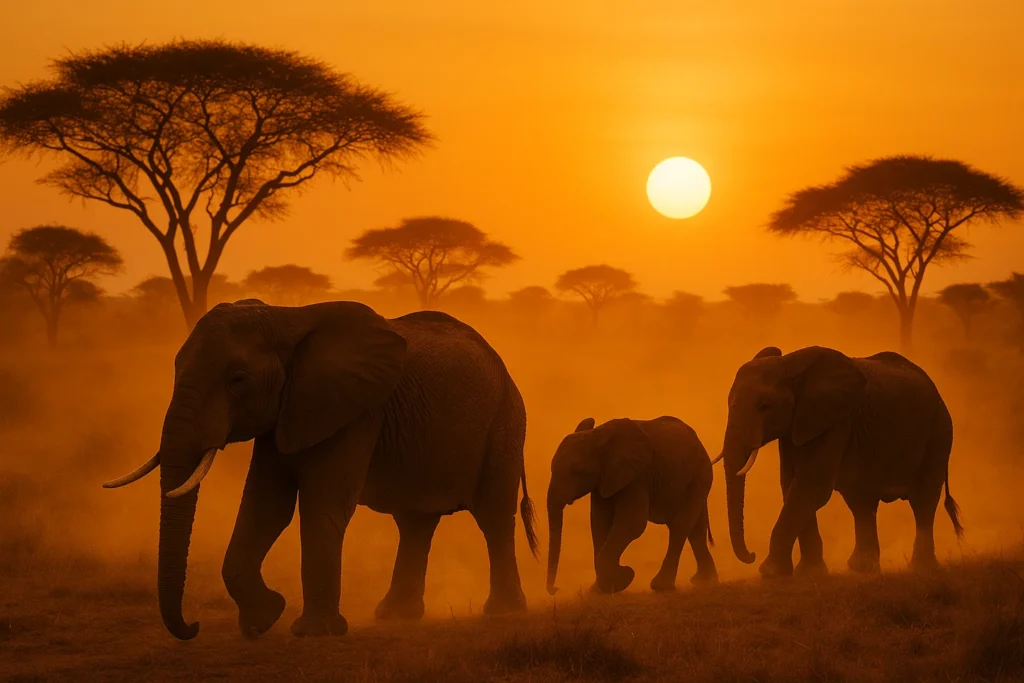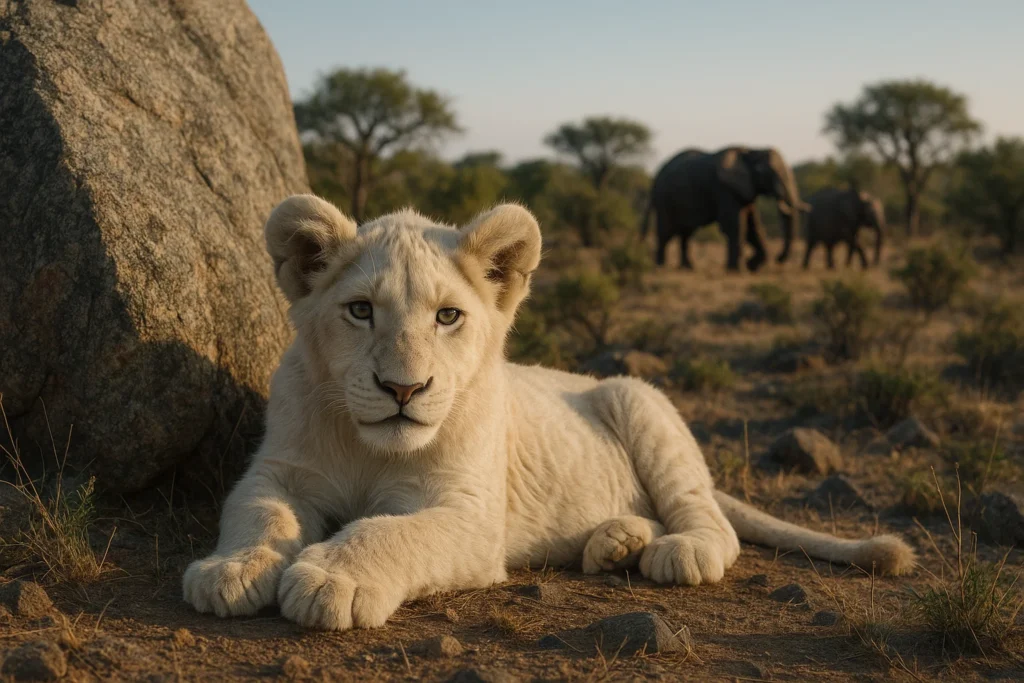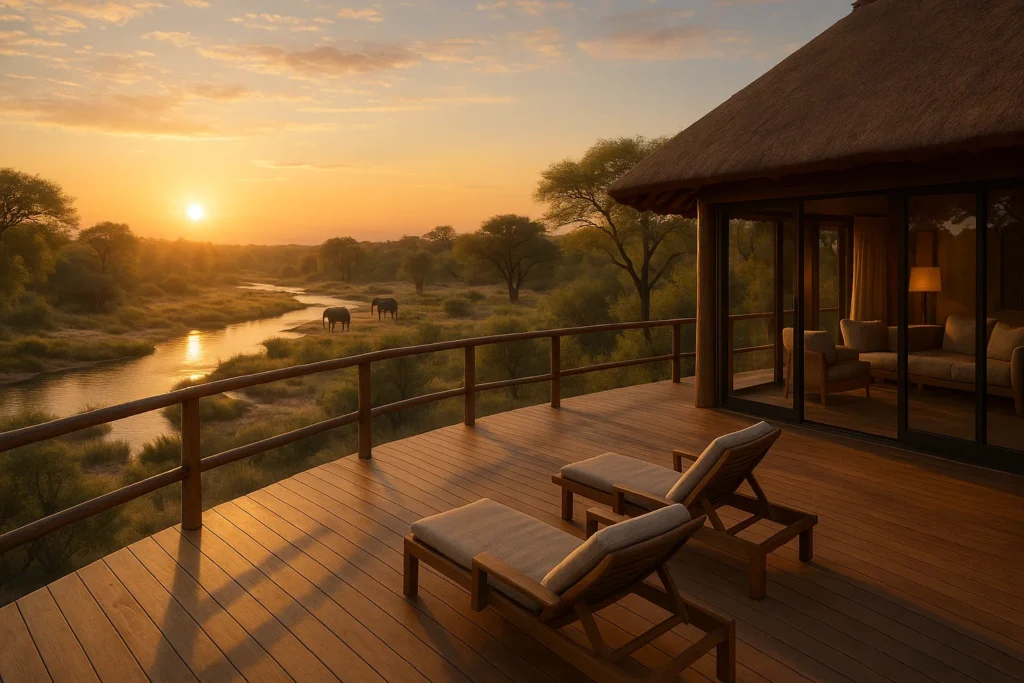Few moments in Africa are as enchanting as golden hour on safari. When the sun hovers low over the horizon, it transforms the bushveld into a stage bathed in warm, honeyed tones. For photographers and wildlife lovers alike, these fleeting windows at dawn and dusk hold a special kind of magic. It is not just about light—it’s about atmosphere, movement, and the chance to capture wildlife in its most natural rhythm.
What makes golden hour so special
Golden hour is the period shortly after sunrise and just before sunset when the sun sits low in the sky. Unlike the harsh midday light that flattens colors and creates stark shadows, golden hour light is diffused and soft. It brings out the golden hues of the African savannah, adds depth to the landscape, and wraps subjects in a flattering glow.
Beyond aesthetics, golden hour also coincides with peak wildlife activity. Predators stir after a night’s hunt or begin preparing for the evening, while herbivores take advantage of the cooler hours to graze. This synergy between light and behavior makes golden hour the most rewarding time for safari photography.
The mood of dawn versus dusk
Though both morning and evening golden hours are breathtaking, they each carry a different energy.
- At dawn, the bush is filled with freshness and anticipation. Mist sometimes lingers over rivers and grasslands, creating ethereal backdrops. Birds are at their most vocal, and large mammals are often active after cooler nights. The soft, pinkish light adds a sense of serenity to every frame.
- At dusk, the mood shifts. The golden tones are richer and more dramatic, often intensifying into fiery oranges and purples. It’s a time of transition, when nocturnal animals begin to stir and diurnal ones settle in. The air is charged with expectation, perfect for capturing dramatic silhouettes and storytelling images.
Wildlife in golden light
Golden hour enhances not just the landscape but the very subjects you’ve come to see.
- Elephants glow with warm tones, their textured skin highlighted in every wrinkle.
- Big cats like lions and leopards appear regal, their coats catching fire in the setting sun.
- Birds in flight become luminous, feathers rimmed with light as they cut across the sky.
- Ungulates such as zebras and giraffes stand out in the grasslands, their patterns emphasized by long shadows.
These conditions give photographers the opportunity to capture not just an image of an animal, but the essence of its presence within its environment.
Harnessing the light for composition
Golden hour invites creative approaches to framing and composition. It is not just about pointing the lens at wildlife—it’s about using the unique quality of light to tell a story.
- Silhouettes: Positioning yourself against the sun allows you to capture powerful outlines of animals and trees against fiery skies.
- Backlighting: Light shining through manes, tails, or dust stirred up by hooves creates a sense of motion and atmosphere.
- Long shadows: The low sun stretches shadows dramatically, adding depth and geometry to the landscape.
- Reflections: If you’re near water, golden light reflecting on rivers and pans doubles the magic.
By consciously working with these elements, you can elevate a wildlife shot from simple documentation to visual storytelling.
Beyond the camera: experiencing golden hour with your senses
While many travelers focus on photography, golden hour is also about presence. The cooler air carries the scent of wild sage, the calls of distant hyenas echo across valleys, and the silhouettes of acacias stand stark against the sky. Even without a camera, these moments linger in memory as some of the most intimate safari experiences.
Guides often choose golden hour for sundowners, a time when you can sip a cool drink in the bush as the light softens. It’s a ritual that connects you not just with nature, but with the rhythm of Africa itself.
The fleeting nature of golden hour
Part of the magic lies in its brevity. Depending on the season and location, golden hour may last less than an hour. Being prepared—mentally, emotionally, and yes, photographically—ensures you can make the most of it. But equally, there’s value in putting the camera down, soaking in the glow, and realizing you’re witnessing a timeless cycle that has played out for millennia.
Conclusion
Golden hour on safari is more than just a photographer’s dream—it’s a window into the soul of the African wilderness. Light, wildlife, and atmosphere converge in moments that feel almost sacred. Whether you capture it through a lens or with your heart, the memories created in those fleeting hours will stay with you long after you leave the savannah.
FAQs
Golden hour usually falls within the first hour after sunrise and the last hour before sunset, though the exact timing depends on the season and your safari location.
Yes. In East Africa’s wide plains, the light often feels more expansive, while in Southern Africa, the reddish soils can intensify the glow, giving each region a unique character.
Not at all. Even if you’re not photographing, it’s the most atmospheric time to observe wildlife, enjoy sundowners, or simply absorb the landscapes.
Yes. Many predators are more active during cooler hours, while grazers tend to feed then, making it an excellent time to witness natural interactions.
Plan ahead by being ready in position early, whether that means setting up your camera, choosing a comfortable seat in the vehicle, or simply opening yourself to the experience.
Clear skies produce strong golden tones, but scattered clouds can add drama, color shifts, and texture to your images and experience.
Both offer incredible opportunities. Sunrise tends to be quieter and more peaceful, while sunset is often more dramatic and social with sundowner traditions.
Yes. While professional cameras offer more flexibility, modern smartphones handle golden hour light well—focus on composition and timing rather than gear.






